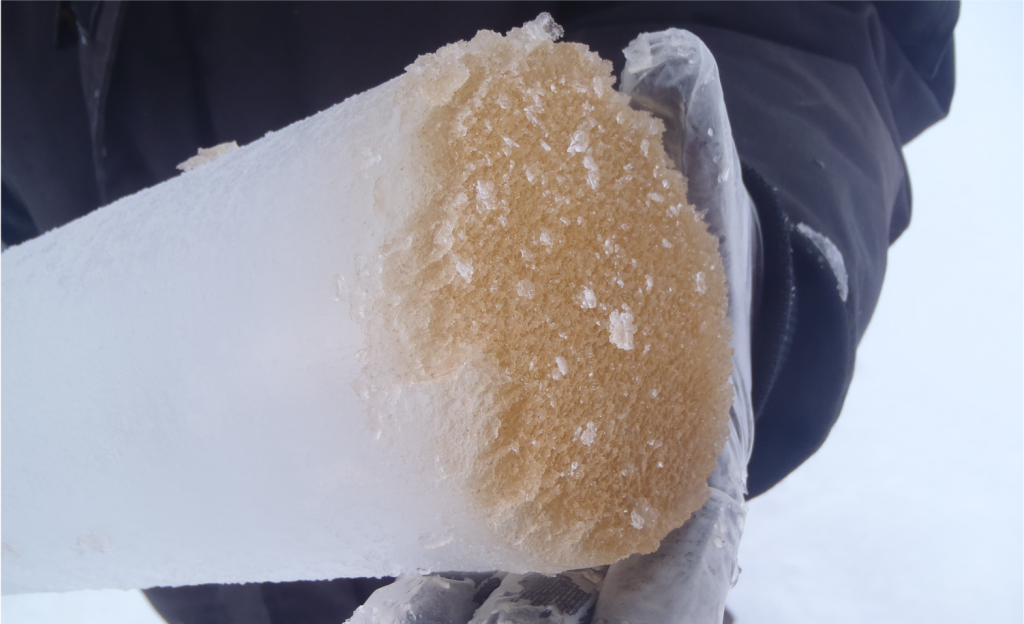Sample was filtered through pre-combusted (450degC for 5 hr) Whatman GF/F filters using a sterilized syringe. Filtrate was collected in acid-cleaned polyethylene tubes after three rinses with the filtrate, and stored at -20degC until analysis within 6 months using a Bran-Luebbe 3 autoanalyzer (adapted from (Grasshoff et al. 1999)). Samples were analyzed for nitrate+nitrite, phosphate and silicic acid. Samples for Si(OH)4 determination were thawed for at least 24 hr to minimize the issue of silicate polymerization when samples have been stored by freezing (Macdonald et al. 1986).
Bulk ice nutrients - samples were from ice cores melted without filtered seawater addition
Water Column - 2 m water depth
Intracellular Nutrients - The method used to extract the intracellular nutrient pool was adapted from (Dortch 1982). Within 3 hr of collection, a subsample from the scrape sample was filtered onto a pre-combusted (450°C for 5 h) Whatman GF/F filter within an acid-cleaned filter head mounted on a large Erlenmeyer flask. Once enough material was concentrated on the filter (visible confirmation), vacuum pressure was released and a 60-mL acid-cleaned polyethylene tube, rinsed with boiling reverse osmosis water, was suspended below the filtration head within the Erlenmeyer flask. Then, 40 mL of boiling reverse osmosis water was poured directly into the filter funnel. The water was left for 10 minutes and then vacuum pressure restored and the filtrate was collected in the suspended tube. Following collection of the filtrate, the tube was sealed and placed immediately into the -20degC freezer. Following the abovementioned protocol, a subsample of the boiling reverse osmosis water was also collected as a blank for every sample day.
Q. Dortch, Effect of growth conditions on accumulation of internal nitrate, ammonium, amino acids, and protein in three marine diatoms. Journal of Experimental Marine Biology and Ecology 61, 243–264 (1982).
K. Grasssshoff, K. Kremling, M. Ehrhardt, “Frontmatter” in Methods of Seawater Analysis, (John Wiley & Sons, Ltd, 1999), pp. i–xxxii.
R. W. Macdonald, F. A. McLaughlin, C. S. Wong, The storage of reactive silicate samples by freezing. Limnology and Oceanography 31, 1139–1142 (1986).
